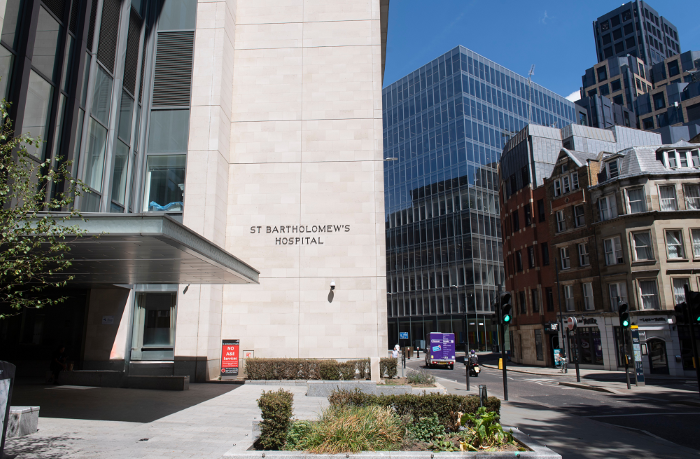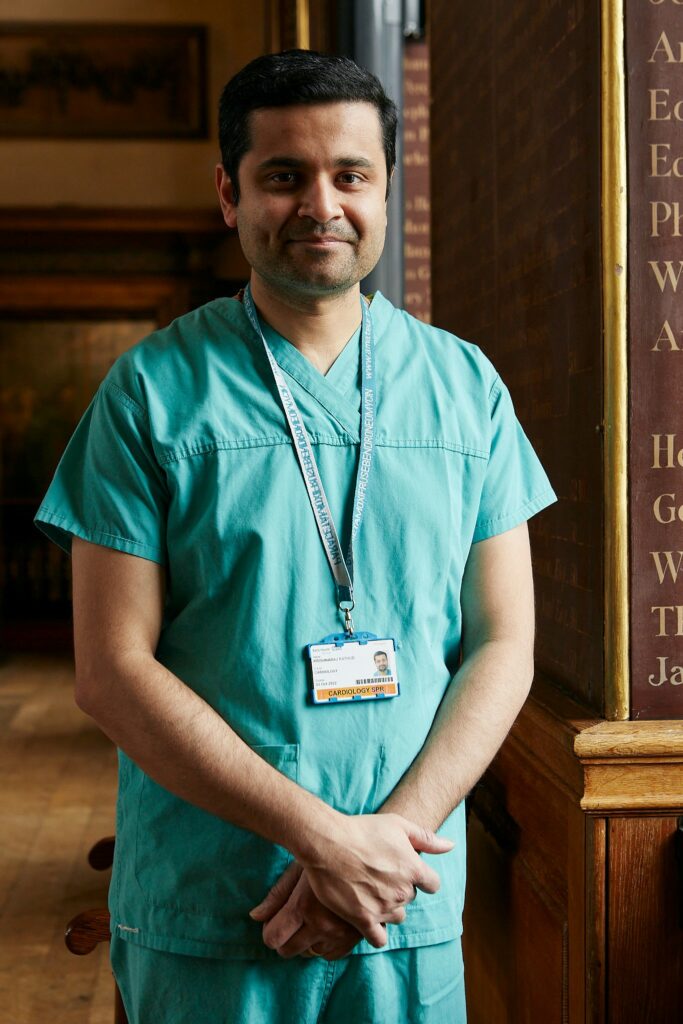Digital ECGs at Barts Health: A high-impact win for NHS digitisation

Patients with chest pains and suspected heart attacks are benefitting from better informed decisions in a high-impact initiative led by clinicians, writes Dr Krishnaraj Sinhji Rathod, Consultant in Interventional Cardiology at Barts Health NHS Trust. He explains the clinical, environmental, and efficiency significance of digitising electrocardiograms, and the opportunity to scale success more widely in the NHS.
Picture the moment: a patient in an ambulance, en route to hospital with new chest pain. Paramedics understandably suspect a possible heart attack, having carried out an electrocardiogram (ECG).
On arrival at the hospital the patient’s prior ECGs are not available, with paper printouts unavailable on the ward, and potentially buried in a paper archive, or not documented in the patient record. Further clarity is needed. Clinicians assess the patient, and they order tests such as a chest x-ray or an angiogram to help diagnose the problem and to identify the best course of action.
A different approach that has quickly become mainstream practice at Barts Health NHS Trust (Barts Health), is changing how clinical teams can make better informed decisions in such situations, helping to get patients on the right pathway at the earliest opportunity.
Led by Dr Krishnaraj Sinhji Rathod, Dr Andrew Wragg and the trust’s interventional cardiology team, and supported by the introduction of WiFi-enabled Baxter ECG machines, the approach has been derived from a patient safety-driven project that has transformed visibility of ECGs across four of the Trust’s hospitals. Clinical gains, consistently appropriate treatment, and a positive environmental impact are resulting.
The right tests, the right place, the right course of action
Digitisation is providing an unprecedented availability of ECG history to clinical teams. It means that within minutes or potentially seconds of arrival, and sometimes even before patients arrive, clinical colleagues can look on the trust’s clinical record system and examine what previous ECGs looked like.
In the scenario described at the beginning of this article, if the patient’s symptoms are not suggestive of a heart attack, despite concerns raised in the new ECG, availability of identical previous ECGs can enable a clearer decision to be made about the right course of action for that patient.
This might mean direction to a different site, or a different type of test rather than an angiogram for example, and we can accelerate the most appropriate diagnostic and care pathways.
It also means that in clinic we can enable faster reviews of ECGs through a flow of information with district general hospitals, something not previously possible with paper records.
Successful adoption
When we started this project at Barts Health, less than a third of ECGs were being captured digitally across our sites. Now some 80 per cent to 90 per cent of ECGs are captured digitally at the Barts Health Centre in St Bartholomew’s Hospital, and by colleagues in Newham, The Royal London and Whipps Cross hospitals.

This has been an amazing transformation and it is still growing – with areas such as our intensive care unit and specialist beds on some wards readying to come on board with digital ECGs in the next year.
Training has been straightforward, staff have found this quick and easy to use, and our digital process is removing risk of errors.
We made new use of the Trust’s WiFi-enabled Baxter ECG devices – harnessing our existing technology investments in new ways, with trust engineers and partners at technology provider Baxter working together to enable information to flow between the devices and our care record system.
This has meant that for staff the system is simple. Using the Trust’s care record system, the nurse requests the right test, which is then automatically picked up on our ECG machines.
The healthcare professional using the machine, then verifies the patient name and date of birth at the bedside – using data on the machine and matching this to the patient’s wristband, allowing them to make sure data is captured for the right patient.
The ECG is then carried out and transferred immediately and directly from the Baxter device, and into the electronic care record system.
There is no longer a need to take a printed document, write a name, or manually record data – reducing inaccuracies and errors in patient care, and risks of records going missing or being misfiled.
Carbon, cost, and clinical impact
Significant impact is being realised. The Trust now prints far fewer ECGs. This is saving thousands of pounds in printing costs alone, and we require fewer physical machines, having reduced our reliance on printing carts. This is in turn beneficial to the Trust’s environmental impact, supporting its alignment with NHS net zero efforts
And though we are still to quantify many clinical benefits, what impact there has been has proved hugely significant. Inappropriate admissions are not happening anymore. Delayed treatment of patients is now being prevented, and savings can be made on avoided inappropriate tests such as angiograms and angioplasty. Clinical risks are also being mitigated – for example the risks of inappropriate procedures that we are now better positioned to prevent through informed decisions.
Additional blood tests for troponin, that might be carried out in the absence of information, are being avoided. These can lead to longer hospital stays as patients wait for results. If taken during the weekend, a patient might have been required to remain in hospital for the remainder of weekend as they wait to be reviewed by a specialist on a Monday, and might have been sent for a CT scan, or for review by other specialists – all of which can now be more easily avoided when not required.
Better compliance with national guidelines around the timeliness of key interventions, and ‘door to balloon’ times, has also been supported. Patients with some of the most severe heart attacks can require their artery to be opened within 90 minutes. At Barts Health, we aim to do this in 60 minutes. Our compliance has improved to approximately 95 per cent in the last year, as part of a package of measures that includes more easily comparable digital ECGs.
In so many ways, availability of information means that we are releasing scarce healthcare resource for those in greatest need, reducing cost, improving safety of patients, and rapidly putting the patients on the right pathway.
Patient satisfaction
Patients have remarked on their satisfaction with our new approach. Paper-based ECGs, that have the potential to go missing, can frustrate patients if delays ensue in recognising when they have not had a heart attack. But now, with access to ECGs from different sites, we can confidently examine a dozen or more ECGs that all look the same, and advise the patient they don’t need further tests for a heart attack, within seconds of accessing their record.
There has been a noticeable difference in the way we treat patients, and the way they feel about treatment, with many saying how impressed they are that we can make such determinations so quickly.
Analogue to digital: An opportunity to scale
We have now carried some 200,000 digital ECGs. If there is one negative, it is that patients sometimes question why this isn’t available everywhere. My aim is to promote this digital initiative, so that as many hospitals as possible can consider incorporating similar approaches. The opportunity is to scale this beyond Barts Health.
We are living in a world of AI, and of exciting emerging technologies. That ECGs remain on paper seems strange, and might be described as an example of Lord Darzi’s description of an NHS in the “foothills” of digital transformation.
Opportunities to unleash raw data that exists in ECGs, and to potentially leverage AI to predict what might happen to patients demonstrates that more could be done to realise even further benefits from work we have started, a conversation I am beginning to explore.
More immediately this is an affordable and straightforward aspect of digitisation to deliver – one which utilises relatively inexpensive ECG machines that may already be in place for many hospitals. Efficiency, high-impact possibilities, and the potential for better outcomes, might make this attractive to others.
As the NHS continues to deliver large scale digitisation programmes against a policy backdrop to shift from ‘analogue to digital’, this initiative merits attention from boards to wards.
